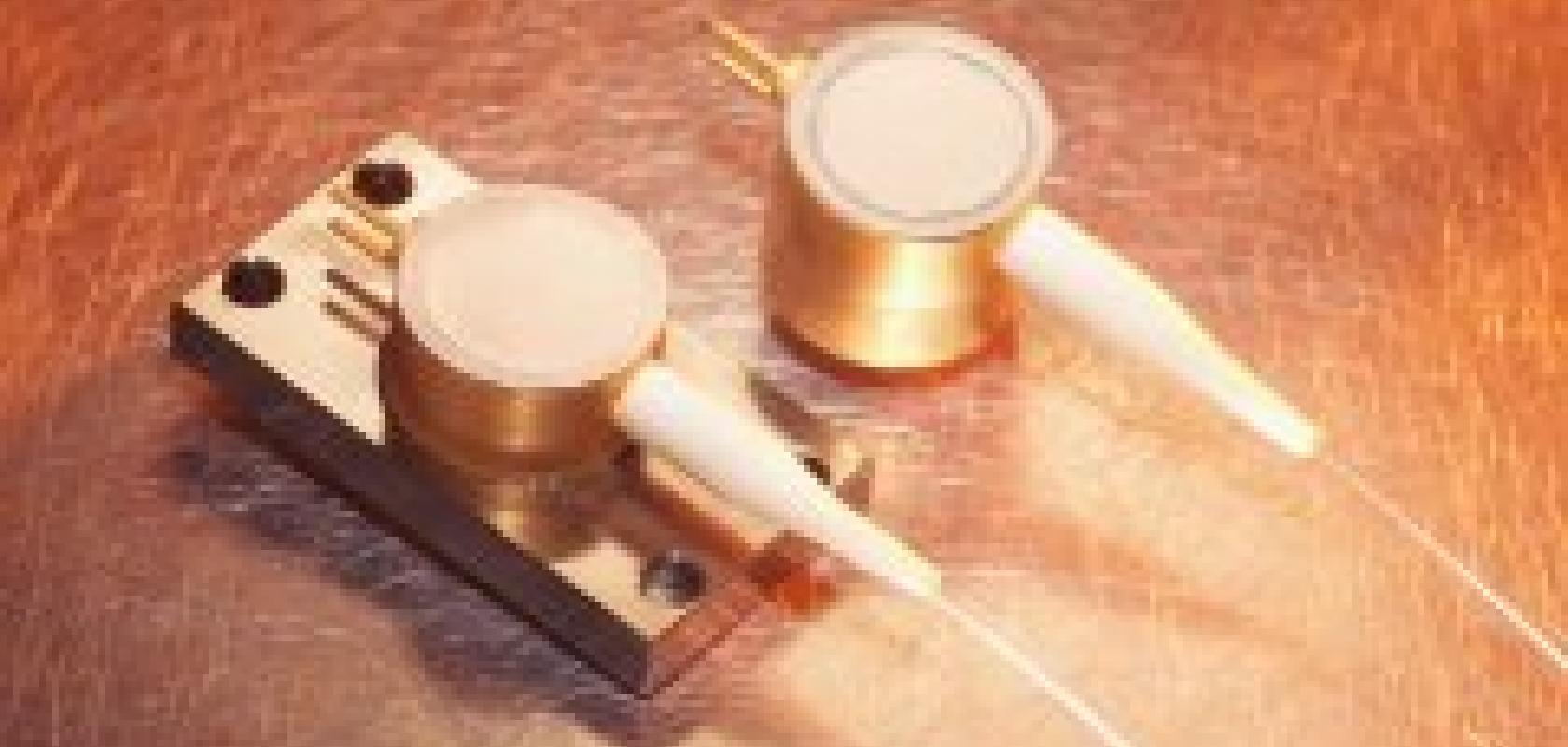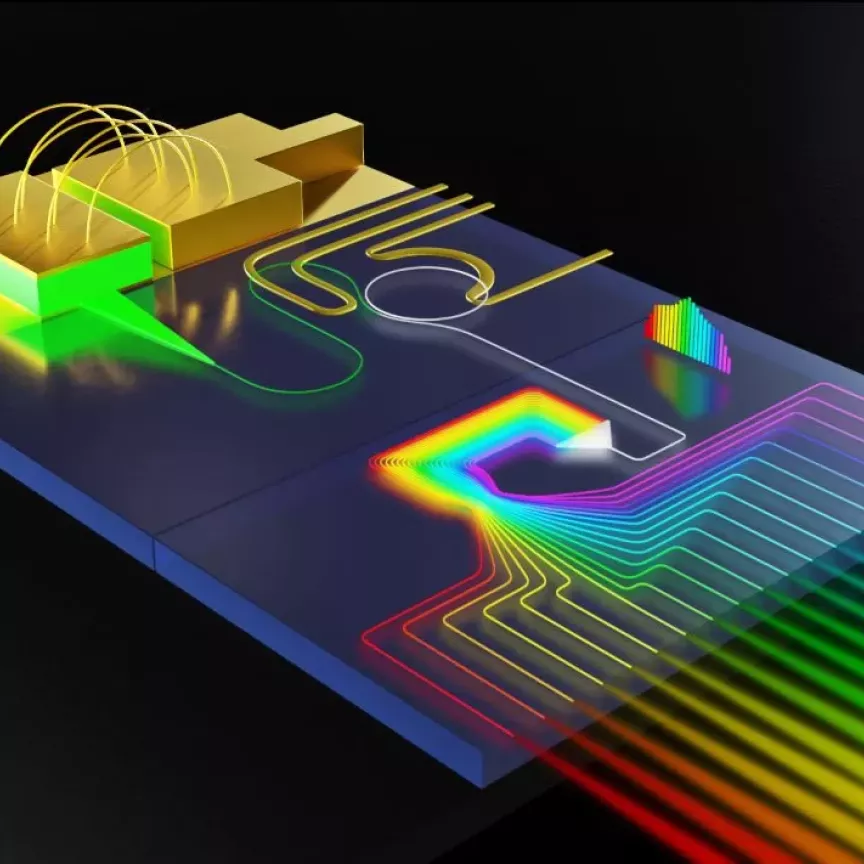Flying may be safer than driving a car, but statistics show that more fatalities actually occur during take-off than during any other period of flight. Previously undiscovered technical failures and problems on the runway may arise, and if the plane takes off too quickly the tail may hit the runway and crash the plane before it’s even left the ground.
However, for the aviophobes still reading, there is comfort, thanks in no small part to the advanced technology aviation engineers now employ. Using diode lasers, planes now contain a sensor that detects the proximity of the ground and stops the plane from rising too rapidly. The small size, light weight, and reliability make them the only feasible option: reasons that have made them by far the most popular laser around today.
Diode lasers also increase safety once the aircraft has taken flight, by measuring the height of clouds around airports. Using similar principles to the tail sensor, pulsed laser light is shot into the clouds from the ground and reflected back. The length of time for the signal to return is measured, and from this, the height of the clouds can be obtained.
The signal pulses need to be of just nanosecond length – a feat notoriously difficult to achieve – otherwise the duration of the transmission could not be measured to the required accuracy. To provide this, Laser Components, which makes such lasers, has paid close attention to all stages of production to keep the necessary tight control of the laser beam parameters.
However, diode lasers do not just provide safety for air travel. ‘There are prototypes for a similar system to be used to measure the distance between vehicles, increasing safety during driving,’ says Laser Components’ Chris Varney. ‘They are already being used in an early warning system on trains in Japan.’
Using the same method, Laser Components’ pulsed diode lasers are also used in speed cameras to measure velocities of up to 200 miles per hour, with an accuracy of just one mile per hour. The pulses are high power – up to 220W – and can detect speeds up to a couple of miles away. At a wavelength of 1550nm they pose no danger to the driver.
Pulsed diode lasers from Laser Components
When they are not being used to increase traveller safety, Laser Components’ diode lasers are also heavily used in defence. ‘Military applications are a huge market,’ says Varney. They can be implanted in binoculars, to display the distance of the object in the centre of the image, and on missiles, to measure the proximity of targets.
Laser Components’ lasers were even used in the Miles 2000 (Multiple Integrated laser Engagement System) project by the US Army, to simulate weapons safely in direct, force-on-force training. ‘A lot of money is spent on this,’ says Varney. ‘There was no other choice but to use diode lasers. They are low power, and don’t need big cooling fans like crystal and gas lasers, so they can be carried around easily.’
For a safe simulation of battle, a laser beam is shot in place of bullets, and detected on the opponents clothing. Anyone who’s been to a Laser Quest children’s party will have experienced a similar, although obviously less sophisticated, system.
And if diode lasers aren’t used in warfare, they’re used to heal people. Who doesn’t fear the dentist? And the high-pitched whine of a dentist’s drill only heightens the discomfort. However, the latest trend of laser dentistry may be about to change all that, with a drill that just produces a gentle throbbing sound.
In addition to excavating cavities, fibre-coupled diode lasers are also used to remove damaged gum tissue. ‘It painlessly evaporates the soft tissue and cauterises the nerve ending,’ says Toby Strite, manager for high-power laser marketing at JDSU. ‘It’s already widespread in Europe, and is now experiencing a wave of acceptance in America.’
They may also feature on the sidelines of the sports field, providing a kind of ‘laser massage’ for strained muscles. The laser light produced by JDSU’s diode lasers is not strongly absorbed, so it can provide a very deep penetration.

The 2900 series, and the 6395-L3 series of pump lasers from JDSU.
Diode lasers may be hugely popular, but they’re not perfect. Strite explains some of their pitfalls, and why they are suitable for this kind of imprecise application: ‘Diode lasers are less bright than the alternatives, have a limited selection of wavelengths, and can’t be focused so finely, so they are used in low-end, direct applications.’
However, their possible 60 per cent wall-plug efficiency still means they stand head and shoulders above their competitors. It is partly for this reason that they are used to pump and amplify fibre optic signals in telecommunication links, enabling the high bandwidth networks we see today.
After the implosion of the telecommunications industry, many laser companies have been keen to expand into other, more secure markets. Diode lasers are already used prolifically in entertainment; indeed, it is possible that almost every household in the West owns a handful of diode lasers in their CD and DVD players and hard-drives. Strite, however, believes that they will soon also emerge in our living rooms as projection TVs, providing perfect colour contrast, and huge displays that take up less room than traditional plasma screens.
A coin-sized projector could even project the keyboard of a laptop on the table, and the display on the wall. ‘We are already seeing prototypes at tradeshows, and they may become generally available after five years of substantial progress.’
Strite mentions the limited range of wavelengths that diode lasers offer, something which various companies are hoping to improve. In addition they are not easily tuneable – unlike gas lasers, which produce a number of different wavelengths that can then be filtered out.
New Focus, however, has combated this by taking standard diode lasers – the multimode kind used in CD players – and placing them in a specially-shaped resonant cavity with a diffraction grating, to create a single longitudinal mode beam. By rotating a tuning metre that changes the length of the cavity and the relative angle of the diffraction grating, different wavelengths are produced.
In addition to the option of tuneability, the line width is a million times narrower than the output of the original diode. ‘This takes a lot of skill, provided by highly trained technicians,’ says Michael Radunsky, a product line manager of New Focus.
The tuneability makes them particularly suitable for spectroscopy applications, where gas lasers previously took precedence. Ironically for a laser type previously notorious for its lack of accuracy, New Focus diode lasers are also used in the laser cooling of atomic clocks, allowing precise observation of the atomic transitions of Rubidium atoms, which provides an even more exact definition of how long a second is.
They are also used in the study of Bose-Einstein condensate – a blossoming area of theoretical physics, predicted by Einstein in 1925 but only first produced 70 years later. ‘This is very important on a theoretic level as the physics behind it is very fundamental. It is also starting to appear in the real world, such as single atom transistors.’
While their limitations may have restricted them in the past, engineers are constantly finding new ways to overcome these, even if it’s just by tightening their production processes. As Toby Strite, of JDSU, explains: ‘We’ve seen an increase in power of 15 to 20 per cent every year, while the cost of production has seen an annual reduction of 25 to 30 per cent. When compounded over 15 years, this is astounding, and has led to greater acceptance. If you can use a diode laser, it’s a no-brainer.’
Traditionally unsuitable for industrial applications due to their low powers, diode lasers are now playing a greater role in machining and welding. One of the most exciting developments is their position in the growing field of extreme-UV lithography.
Powerlase, a supplier of diode-pumped solid-state lasers primarily for the production of flat panel displays, has recently begun work with University College Dublin to develop techniques to create laser-produced plasma (LPP) as a light source for this kind of lithography. The laser light will hit a target (such as a small tin-doped droplet) at a very high speed to create high-temperature plasma that can be used as a source to create light at a tiny wavelength of 13.5nm. The smaller the wavelength, the higher the resolution, and this beam will be ideal to create even tinier semiconductor structures on faster computer chips.
And if the LPP method doesn’t work, Powerlase can always rely on their lasers being used to ignite discharge produced plasma (DPP) – another possible source of extreme UV light, generated using an electric field. ‘Our main market is in flat panel displays, but we are confident extreme-UV applications will be successful in the future,’ says Dr Samir Ellwi, vice president of strategic innovations at Powerlase.
Bookham, on the other hand, provides high-power, high-brightness diode lasers that are used directly in machining applications. They use a passivation process that avoids oxidation of the gain material and provides greater reliability and stability than is previously associated with these lasers.
They are used in soldering, tool repair, and the plastic welding of electronic packages. This kind of heat treatment is highly cost effective, while still maintaining flexibility in the materials.
The Starlase diode laser from Powerlase


